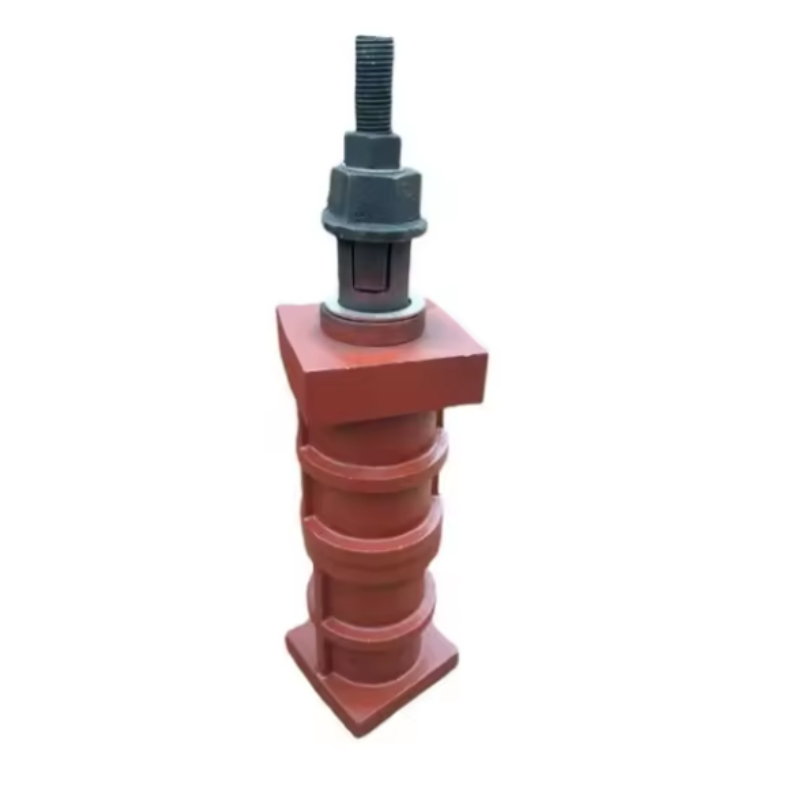dec . 02, 2024 01:03 Back to list
linear guide rail
Understanding Linear Guide Rails Essential Components for Precision in Motion
Linear guide rails are critical components in various applications, particularly in machinery and automation systems where precise linear movement is essential. These guides are designed to provide accurate motion along a straight path, ensuring smooth and reliable operation. This article explores the types, features, applications, and advantages of linear guide rails, providing insight into their importance in modern engineering and manufacturing.
What Are Linear Guide Rails?
At their core, linear guide rails consist of a track and a moving element, typically a carriage or slider that rides along the track. The design allows for minimal friction and maximizes load capacity, which is vital in precision applications. Generally made from high-quality materials like steel or aluminum, linear guide rails are engineered to withstand various loads and environmental factors, making them suitable for diverse applications.
Types of Linear Guide Rails
There are several types of linear guide rails, each designed for specific applications
1. Ball Type Linear Guides These are the most common type featuring a series of ball bearings that reduce friction between the moving parts. This design allows for smooth motion and high-load capacities, making them suitable for CNC machines and 3D printers.
2. Roller Type Linear Guides Instead of balls, these guides use cylindrical rollers. Roller guides provide even lower friction and higher load capacities, which is advantageous for heavy-duty applications.
3. Magnetic Linear Guides These utilize magnetic fields for motion and are often used in high-speed applications or where contact-free movement is required. They offer the advantage of reduced wear and tear.
4. Profile Rail Guides Known for their robust build, profile rail guides can handle high loads and multi-directional forces. They’re often used in industrial machinery due to their stability and durability.
Key Features
When selecting a linear guide rail, several critical features should be considered
- Load Capacity The ability to support specific weights without deformation or failure is paramount. Higher load ratings mean the guide can handle more substantial machinery or components.
- Precision The accuracy of the linear movement should meet the application’s requirements. High precision is crucial in applications such as semiconductor manufacturing and optical instrument assembly.
- Durability Resistance to wear, corrosion, and environmental factors increases the lifespan of the guide rail. Many manufacturers offer coatings or treatments to enhance durability.
linear guide rail

- Ease of Installation User-friendly designs can significantly reduce setup time and labor costs. Some guide rails come with integrated features that simplify alignment and mounting.
Applications of Linear Guide Rails
Linear guide rails find their applications in a wide range of industries. Here are a few prominent examples
- Manufacturing and Automation Used in robotics, conveyor systems, and automated assembly lines, linear guide rails ensure precise and efficient movement of components.
- Medical Equipment In devices such as MRI machines and surgical robots, guide rails provide the accuracy necessary for life-saving technologies.
- Transportation They are used in elevators and escalators, where smooth and reliable movement is essential for safety and functionality.
- CNC Machining The accuracy of linear guide rails is vital for CNC machines, allowing for intricate designs and high-quality finishes in metal and woodwork.
Advantages of Using Linear Guide Rails
The incorporation of linear guide rails in engineering solutions provides several advantages
- Increased Efficiency The reduced friction and increased load capacities contribute to faster cycle times in production environments.
- Enhanced Precision Improved movement accuracy minimizes errors in manufacturing processes, leading to higher quality products.
- Greater Flexibility The variety of designs and options allows engineers to choose the right guide rail for specific applications, lending versatility to system designs.
- Long-term Cost Savings Though the initial investment may be higher, reduced wear, maintenance needs, and high precision can lead to significant long-term savings.
Conclusion
Linear guide rails play a vital role in ensuring precision and efficiency in various applications across multiple industries. Understanding their types, features, and benefits can help engineers make informed choices that enhance operational performance and product quality. As technology advances, the development of more sophisticated and adaptable linear guide systems will undoubtedly shape the future of motion-based applications.
-
Thread Plug Gauge Our Promise of Measurement ExcellenceNewsAug.22,2025
-
Gauge Pin Class Reflecting Quality LegacyNewsAug.22,2025
-
Check Valve Types for High Rise BuildingsNewsAug.22,2025
-
Water Control Valve for Irrigation SystemsNewsAug.22,2025
-
Gate Valve with Soft Seal TechnologyNewsAug.22,2025
-
Y Type Strainer for Oil and Gas ApplicationsNewsAug.22,2025
Related PRODUCTS









